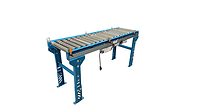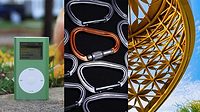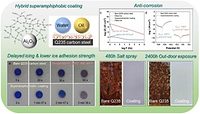Anti-Reflective Coating Increases Solar System Conversion Efficiency
XeroCoat, Inc., a pioneering Silicon Valley start-up, has officially announced its entry into the solar energy market. Targeting the solar thermal and solar photovoltaic segments, XeroCoat designs and manufactures a high-performing anti-reflective coating for solar energy systems. Applicable across all solar energy technologies, the XeroCoat anti-reflective coating technology can significantly increase conversion efficiency and, consequently, the power output of solar systems in a very cost-effective manner. XeroCoat's technology offers the advantages of superior solar energy transmission, exceptional durability, and lends itself to high-volume, low-cost manufacturing.
Founded by two University of Queensland, Australia, researchers, XeroCoat is headquartered in Redwood City, California, and maintains its R&D base in Brisbane, Queensland. The company has an international team of leading optical materials and solar energy scientists and engineers who are focused on continuous innovation of coatings for the solar energy industry. XeroCoat has just signed a contract with a large solar thermal manufacturer to provide the anti-reflective coating for their demonstration line. In addition, the company is actively engaged in demonstrating XeroCoat's technology to several leading photovoltaic module and solar thermal system manufacturers.
"At XeroCoat, we're strongly committed to making solar energy more affordable for all today," stated Tom Hood, Chief Executive Officer and President of XeroCoat. "Our customers are aggressively seeking cost-effective solutions to lower manufacturing costs and increase the conversion efficiency of their solar systems. The XeroCoat anti-reflective coating offers a very simple and cost-effective way to get the most power out of the sun. In addition, our ability to partner with solar energy systems manufacturers and glass suppliers allows for great flexibility to control costs and logistics in the supply chain."
Today, anti-reflective coatings for the solar module cover glass are used in less than 5% of photovoltaic solar systems. Current commercial PV technologies convert 10%-20% of the incoming light to electricity. The same module with a suitable anti-reflective coating can deliver an additional 0.3%-0.6% power conversion. A product achieving higher conversion efficiency in a cost-effective manner can make solar modules more affordable. Delivering high performance requires that the anti-reflective coating reduces reflections and maximizes the solar energy available for conversion into electricity across the broadest range of wavelengths and angles possible.
While multi-layer coatings were the traditional solution, they add cost and reflect sunlight more than uncoated glass at certain incident angles. The combination of a single-layer optical coating and graded low-refractive index enables XeroCoat's anti-reflective coating to achieve the highest attainable optical performance for any type of solar cover glass.
For more information, visit www.xerocoat.com.
Founded by two University of Queensland, Australia, researchers, XeroCoat is headquartered in Redwood City, California, and maintains its R&D base in Brisbane, Queensland. The company has an international team of leading optical materials and solar energy scientists and engineers who are focused on continuous innovation of coatings for the solar energy industry. XeroCoat has just signed a contract with a large solar thermal manufacturer to provide the anti-reflective coating for their demonstration line. In addition, the company is actively engaged in demonstrating XeroCoat's technology to several leading photovoltaic module and solar thermal system manufacturers.
"At XeroCoat, we're strongly committed to making solar energy more affordable for all today," stated Tom Hood, Chief Executive Officer and President of XeroCoat. "Our customers are aggressively seeking cost-effective solutions to lower manufacturing costs and increase the conversion efficiency of their solar systems. The XeroCoat anti-reflective coating offers a very simple and cost-effective way to get the most power out of the sun. In addition, our ability to partner with solar energy systems manufacturers and glass suppliers allows for great flexibility to control costs and logistics in the supply chain."
Increases Energy Returns, Lowers Manufacturing Costs
By using the XeroCoat anti-reflective coating on a photovoltaic module, the solar energy reaching the solar cells is increased by as much as 3% at noon and by as much as 6% at early morning and evening hours. This means that solar module makers can expect a 3% increase in power output on a peak watt (Wp) basis, and a 4% increase in energy produced on a kilowatt-hour (kWhr) basis. This improvement is equivalent to increasing the efficiency of a solar cell by approximately 0.5 - 0.75% points, without having to modify the cell or module manufacturing process. For solar system owners, XeroCoat's anti-reflective coating increases the energy output per module, which translates to higher revenue, especially in locations with a feed-in tariff. In addition, because the peak watt per module is higher, fewer modules are needed to achieve the same total solar system watt rating, resulting in balance of system's cost savings.Anti-Reflective Coatings Increase Power Output
The ultimate measure of success for a photovoltaic module is conversion efficiency – the number that tells us how much of the sun's light energy is converted to electricity. Photovoltaic modules suffer from reduced conversion efficiency even before the sun's light reaches the solar cells. This is because the solar module's protective cover glass reflects some of the incident light. For typical glass panels, depending on the time of day, 4% to 15% and more of the incoming light is lost from reflections and, thus, is not available to generate electricity. Applying an anti-reflective coating to the cover glass of the module will reduce these reflections and increase the module's output power.Today, anti-reflective coatings for the solar module cover glass are used in less than 5% of photovoltaic solar systems. Current commercial PV technologies convert 10%-20% of the incoming light to electricity. The same module with a suitable anti-reflective coating can deliver an additional 0.3%-0.6% power conversion. A product achieving higher conversion efficiency in a cost-effective manner can make solar modules more affordable. Delivering high performance requires that the anti-reflective coating reduces reflections and maximizes the solar energy available for conversion into electricity across the broadest range of wavelengths and angles possible.
While multi-layer coatings were the traditional solution, they add cost and reflect sunlight more than uncoated glass at certain incident angles. The combination of a single-layer optical coating and graded low-refractive index enables XeroCoat's anti-reflective coating to achieve the highest attainable optical performance for any type of solar cover glass.
For more information, visit www.xerocoat.com.
Looking for a reprint of this article?
From high-res PDFs to custom plaques, order your copy today!






